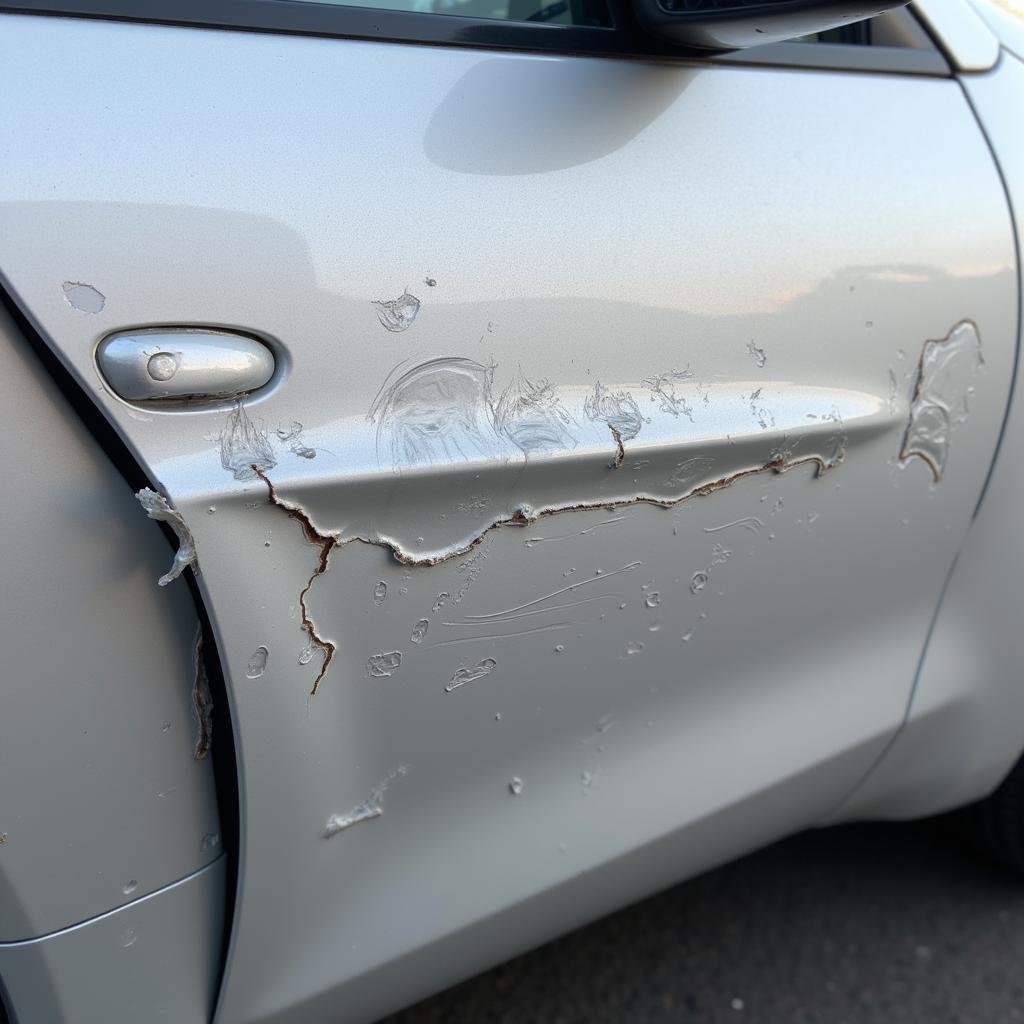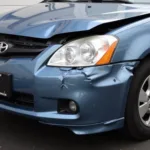Car body repair sheet metal work is a crucial aspect of auto body repair, demanding precision, skill, and the right knowledge. Whether you’re a DIY enthusiast or a seasoned professional, understanding the nuances of working with sheet metal is essential for achieving a flawless repair. This guide delves deep into the world of car body repair sheet metal, covering everything from the basics to advanced techniques.
Understanding the Fundamentals of Car Body Repair Sheet Metal
Working with sheet metal involves shaping, cutting, and joining thin metal sheets to restore a vehicle’s body to its original form. This requires specialized tools and techniques to ensure structural integrity and a smooth, seamless finish. Different types of sheet metal, such as steel and aluminum, have unique properties that influence how they are handled during the repair process. Understanding these differences is crucial for selecting the appropriate tools and methods.  Damaged car body sheet metal requiring repair
Damaged car body sheet metal requiring repair
Understanding the type of damage is also key. Is it a dent, a crease, or a tear? Each requires a different approach. For instance, minor dents might be repairable using paintless dent repair (PDR) techniques, while more severe damage necessitates cutting and welding. The extent of the damage also dictates the tools needed, from simple hand tools like hammers and dollies to more complex equipment like welders and stud welders. Choosing the right best welder for car body repair can significantly impact the quality and durability of your repair.
Tools and Techniques for Effective Car Body Repair Sheet Metal Work
Having the correct tools is paramount. Hammers and dollies are essential for shaping and smoothing the metal. Welders are used for joining metal pieces, while body fillers smooth out imperfections. Choosing the right car body repair paints fillers ensures a seamless finish. Specialized tools like stud welders can be invaluable for pulling out dents. Knowing how to use these tools effectively is just as important as owning them.
What are the common tools used in sheet metal repair?
Common tools include hammers, dollies, shrinking and stretching tools, welders, and sanding equipment. Each tool plays a vital role in shaping, joining, and finishing the sheet metal.
How do you choose the right welding technique?
The choice of welding technique depends on the type of metal being repaired (steel or aluminum), the thickness of the sheet metal, and the extent of the damage. MIG welding is often preferred for its versatility and ease of use. However, TIG welding offers more precision for intricate repairs. Check out our resource on the best welders for car body repairs for further guidance.
Advanced Techniques in Car Body Repair Sheet Metal
Beyond the basics, mastering advanced techniques like metal finishing and body filler application takes time and practice. Metal finishing ensures a smooth, even surface before applying primer and paint. Properly applying body filler is crucial for filling dents and imperfections, creating a seamless foundation for the paint job.
“A perfect repair isn’t just about fixing the damage,” says renowned auto body expert, Michael Davis, “it’s about restoring the vehicle to its pre-accident condition, both structurally and aesthetically.”
Learning from experienced professionals can greatly accelerate the learning process. Online resources like our car body repair youtube channel provide valuable insights and demonstrations.
Conclusion: Achieving Excellence in Car Body Repair Sheet Metal
Car body repair sheet metal work is a challenging yet rewarding skill. By understanding the fundamentals, mastering the necessary tools and techniques, and continuously seeking knowledge, you can achieve professional-level results. Whether you’re a DIY enthusiast tackling a small dent or a seasoned professional restoring a classic car, the principles remain the same: precision, patience, and a commitment to quality. Remember that working with car body repair sheet metal requires attention to detail and a dedication to achieving the best possible outcome.
FAQ
- What type of welder is best for car body repair?
- What is the difference between MIG and TIG welding?
- How do I choose the right body filler?
- What are the essential tools for sheet metal work?
- How do I remove dents from car body sheet metal?
- What are some common mistakes to avoid in sheet metal repair?
- Where can I find more resources on car body repair techniques?
Need assistance with car body repair tools in Australia? Check out car body repair tools australia.
For more information on related topics, visit our articles on car body repair.
When you need support, contact us via WhatsApp: +1(641)206-8880, Email: [email protected]. Our customer service team is available 24/7.


